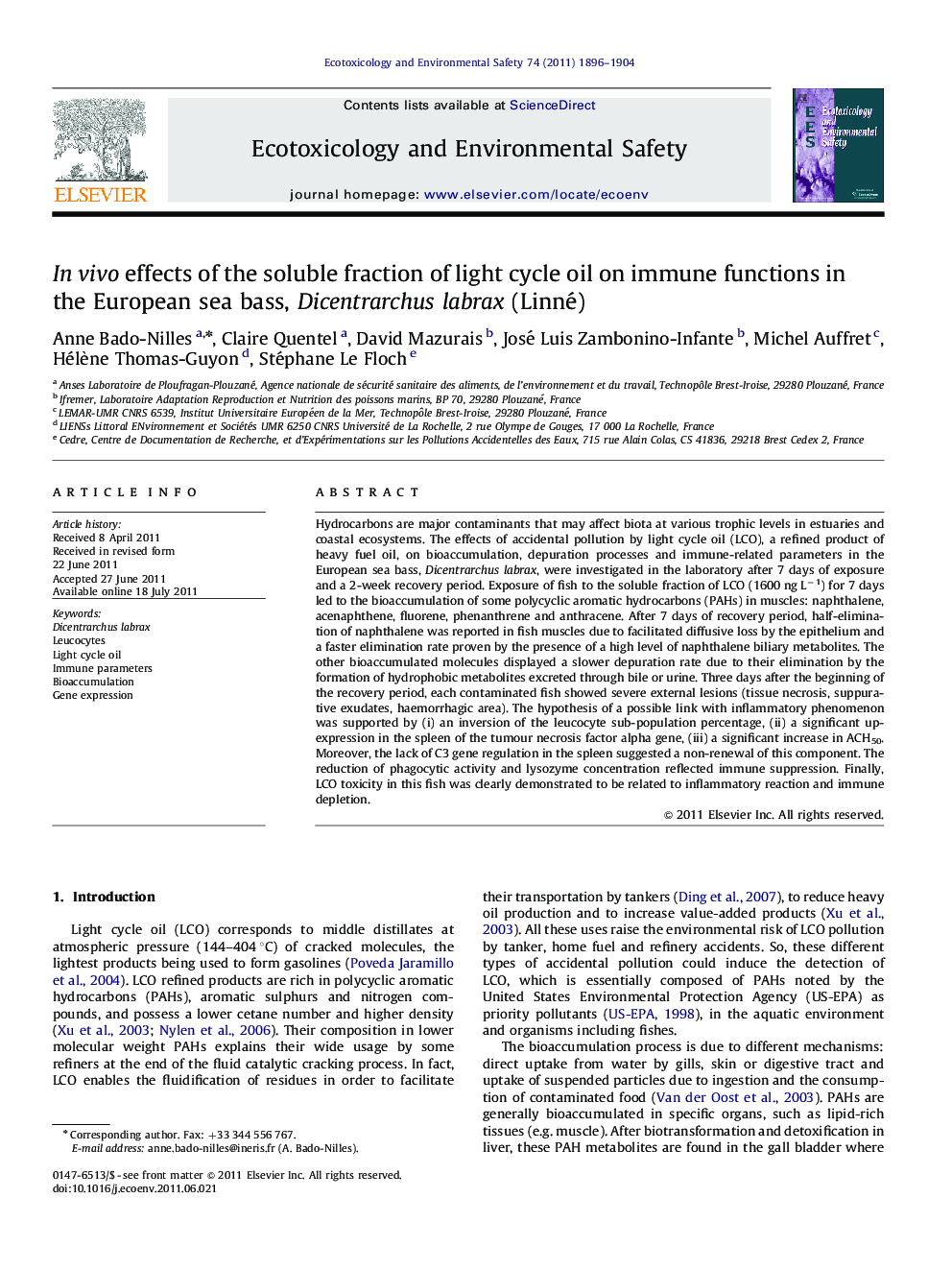| Article ID | Journal | Published Year | Pages | File Type |
|---|---|---|---|---|
| 4421247 | Ecotoxicology and Environmental Safety | 2011 | 9 Pages |
Hydrocarbons are major contaminants that may affect biota at various trophic levels in estuaries and coastal ecosystems. The effects of accidental pollution by light cycle oil (LCO), a refined product of heavy fuel oil, on bioaccumulation, depuration processes and immune-related parameters in the European sea bass, Dicentrarchus labrax, were investigated in the laboratory after 7 days of exposure and a 2-week recovery period. Exposure of fish to the soluble fraction of LCO (1600 ng L−1) for 7 days led to the bioaccumulation of some polycyclic aromatic hydrocarbons (PAHs) in muscles: naphthalene, acenaphthene, fluorene, phenanthrene and anthracene. After 7 days of recovery period, half-elimination of naphthalene was reported in fish muscles due to facilitated diffusive loss by the epithelium and a faster elimination rate proven by the presence of a high level of naphthalene biliary metabolites. The other bioaccumulated molecules displayed a slower depuration rate due to their elimination by the formation of hydrophobic metabolites excreted through bile or urine. Three days after the beginning of the recovery period, each contaminated fish showed severe external lesions (tissue necrosis, suppurative exudates, haemorrhagic area). The hypothesis of a possible link with inflammatory phenomenon was supported by (i) an inversion of the leucocyte sub-population percentage, (ii) a significant up-expression in the spleen of the tumour necrosis factor alpha gene, (iii) a significant increase in ACH50. Moreover, the lack of C3 gene regulation in the spleen suggested a non-renewal of this component. The reduction of phagocytic activity and lysozyme concentration reflected immune suppression. Finally, LCO toxicity in this fish was clearly demonstrated to be related to inflammatory reaction and immune depletion.
► We investigated impact of LCO on bioaccumulation and depuration processes in fish.► Naphthalene was easily eliminated by diffusive loss.► Other molecules displayed a slower depuration rate due to elimination by bile/urine.► Immune parameters were investigated too.► Immune depletion and inflammatory reaction were clearly demonstrated.
